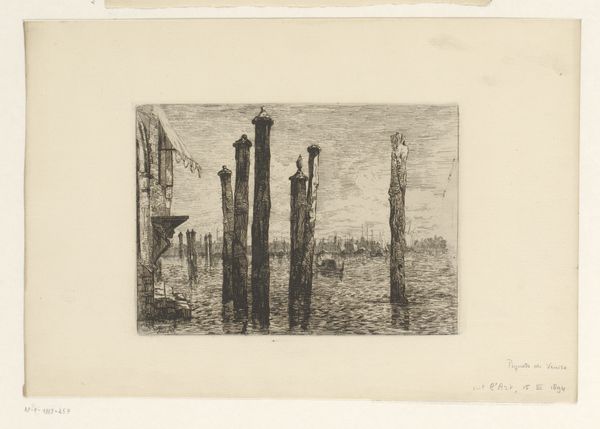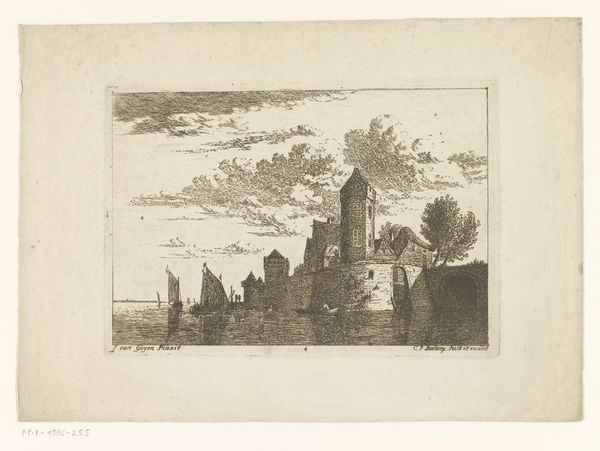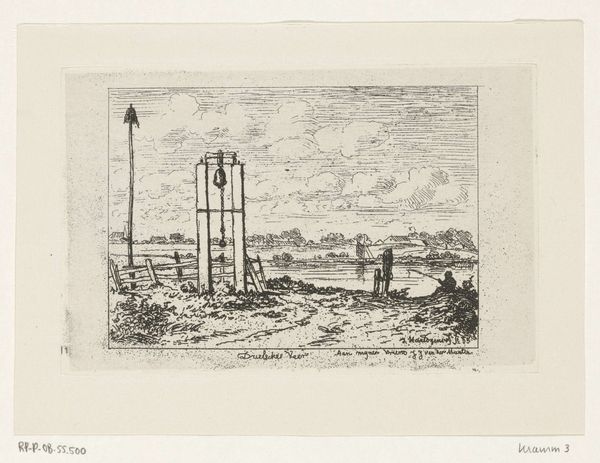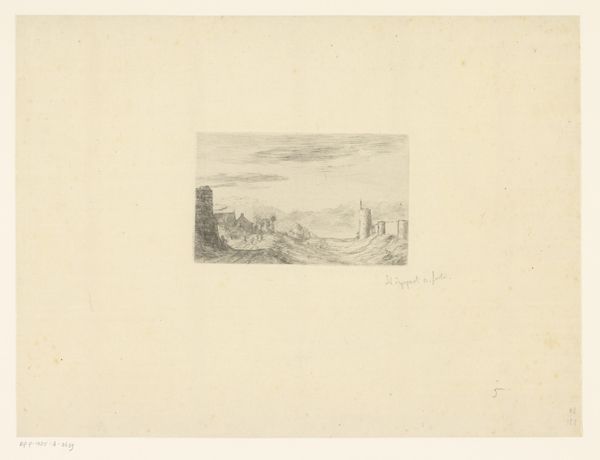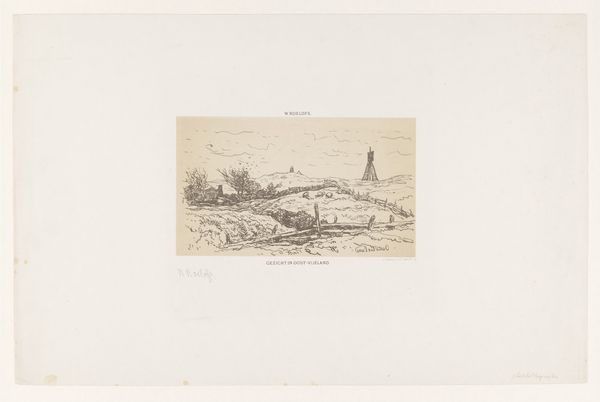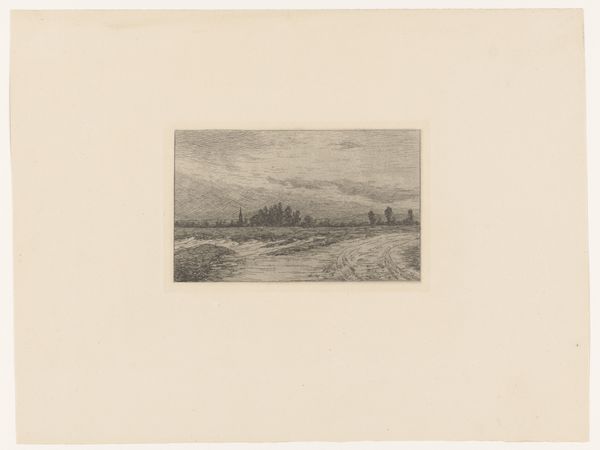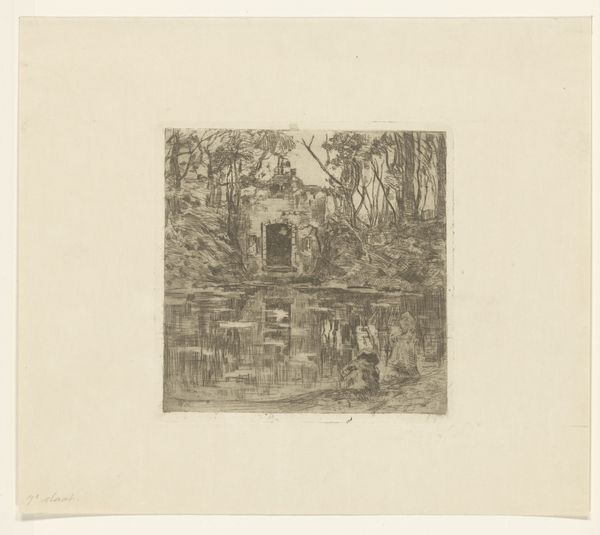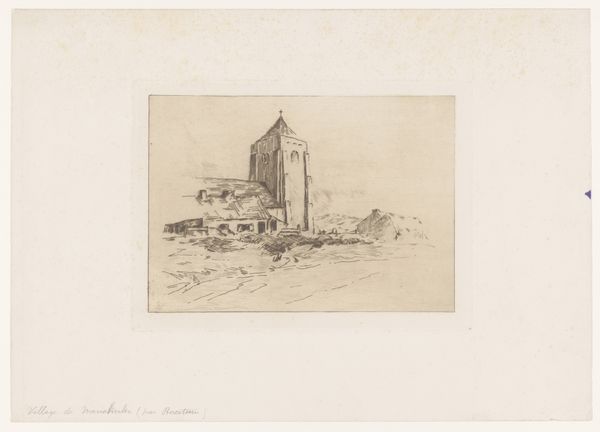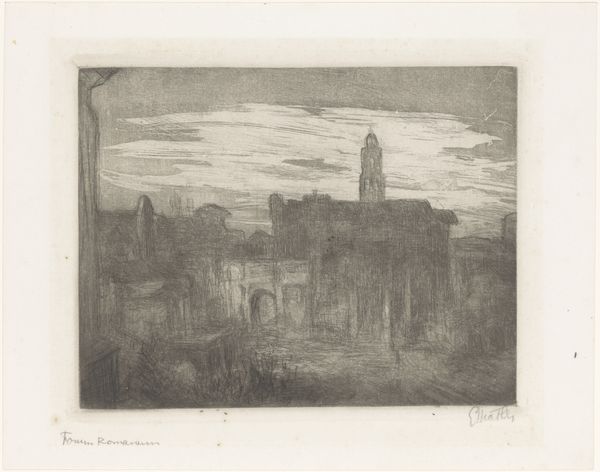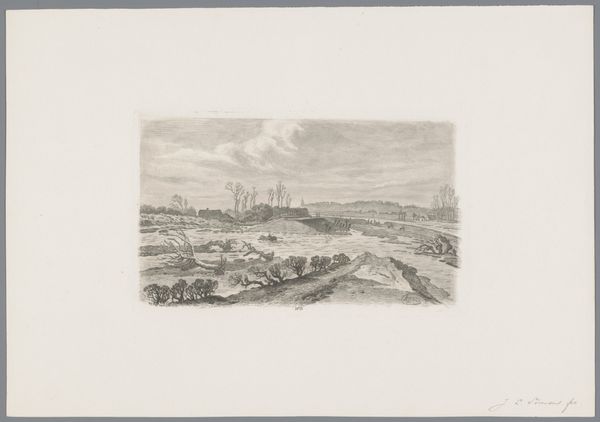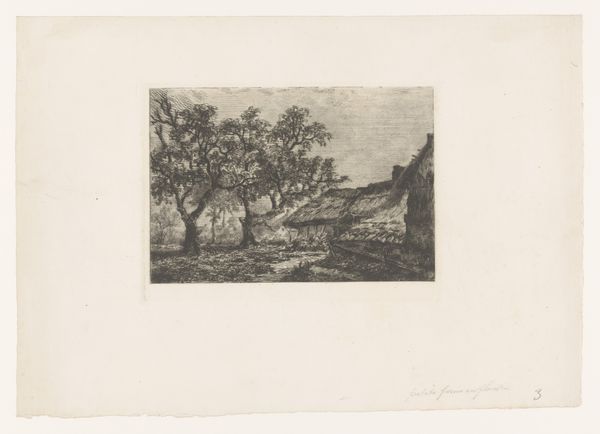
Dimensions: height 202 mm, width 253 mm
Copyright: Rijks Museum: Open Domain
Curator: We’re looking now at Willem Linnig the Younger’s etching, "Kerkhof van Oberweimar," likely created between 1852 and 1890. It resides here at the Rijksmuseum. Editor: Ah, it gives me such a quiet, almost mournful feeling. The landscape looks haunted but not frightening, just... gently melancholic. Is that intentional, do you think? Curator: I think the somber tone stems directly from the site itself. The print showcases the architecture of a cemetery, foregrounding decayed statues and fragmented headstones. Editor: I see it now, those pillars rising out of what feels like organized ruin. Did Linnig render this directly, or would he have based it on some preliminary pencil work? It almost has a sketchbook feel to it. Curator: I would expect that the artist was drawn to this setting and had captured preliminary work as we can see some hints of his other works. What interests me is how Linnig engages with the material qualities of the etching process itself, how he manages to translate such palpable textures using these techniques. Notice how the line work contributes to a strong contrast? Editor: The shadows are beautiful. The buildings are faded back there near the clouds, I get this palpable sense of air and weather. Was there some cultural interest in cemeteries as places in themselves at the time, like tourism almost? Curator: Certainly. It coincided with Romanticism's fascination with ruins and nature reclaiming spaces touched by humanity. Graveyards provided very loaded scenes for contemplating time and the inevitable fate of all. Linnig likely was drawing also on realist themes from social settings during the era of its making. Editor: So, less about pure mourning and more a way to grapple with mortality through the lens of these public, semi-natural spaces. A way to be reflective through artistry and its labor in that time? I am taken back with how somber it felt on the first pass, seeing it this way changed my viewpoint. Curator: Absolutely, seeing Linnig engage here and what can be offered through print truly emphasizes the value and means to his social position and artistic capability. Editor: I will forever have to stop presuming an artwork based on its style, technique, or period of creation. Instead, appreciate how its position truly engages you on a personal level.
Comments
No comments
Be the first to comment and join the conversation on the ultimate creative platform.
